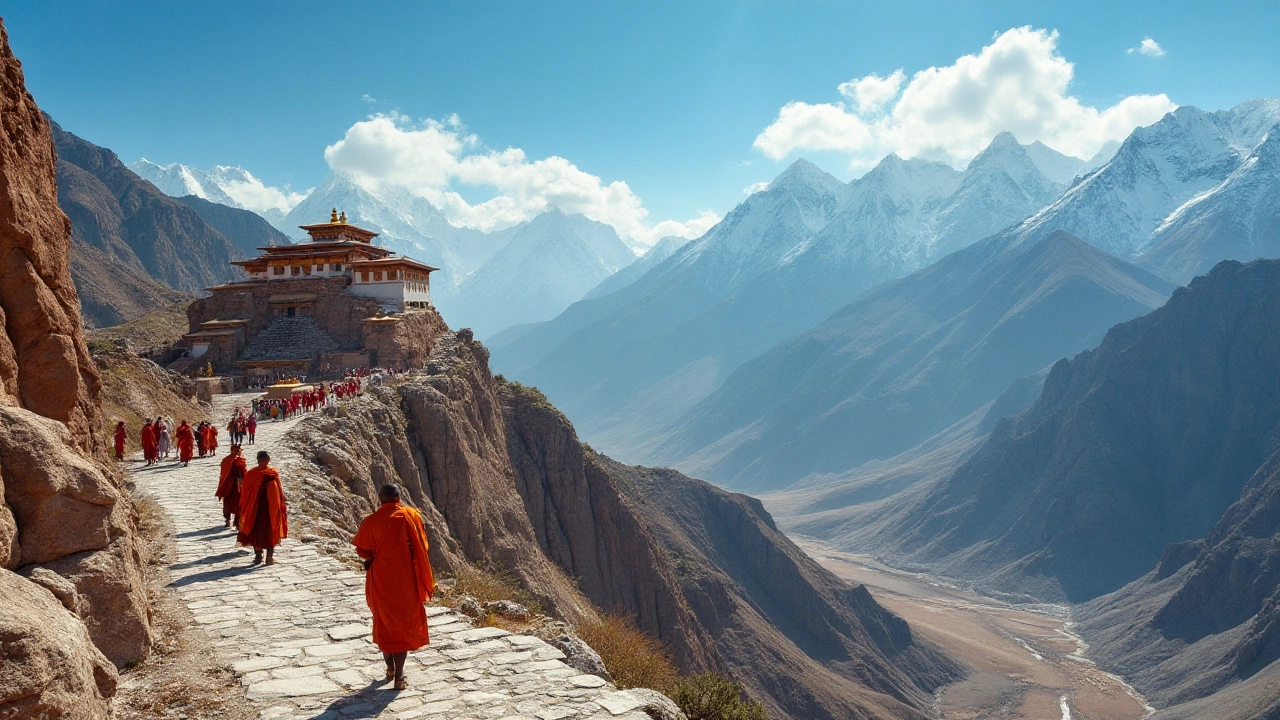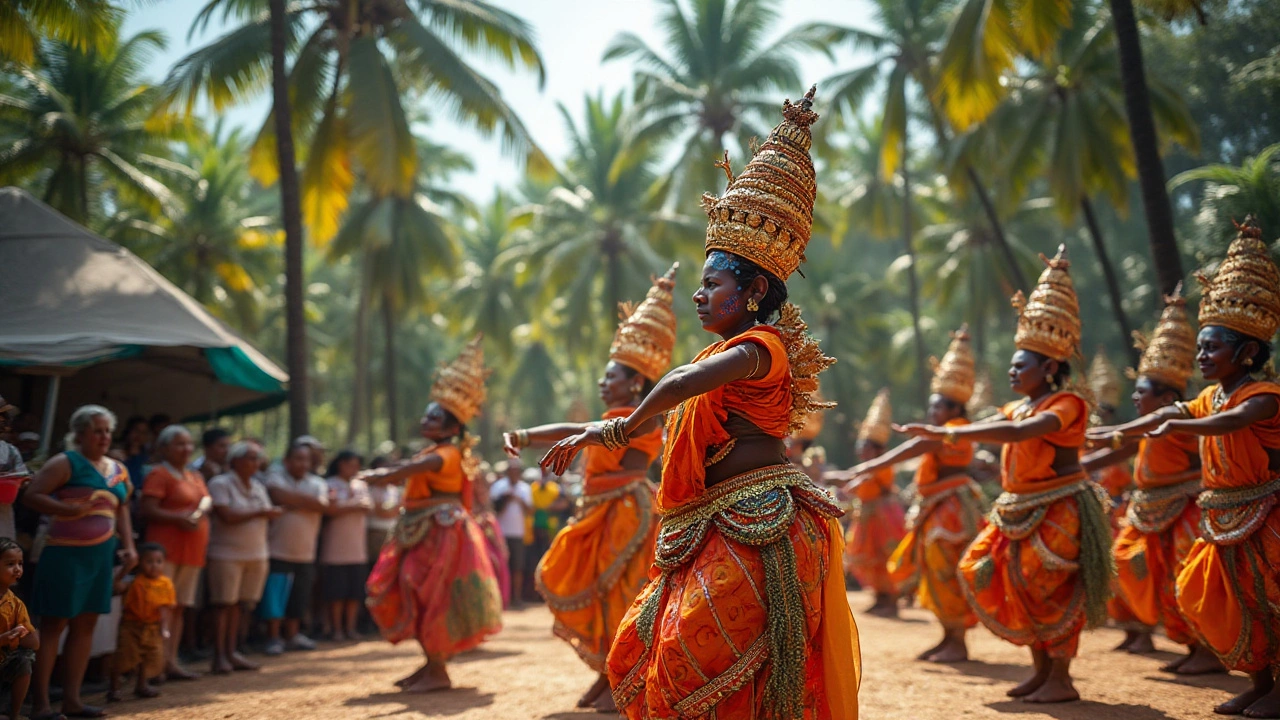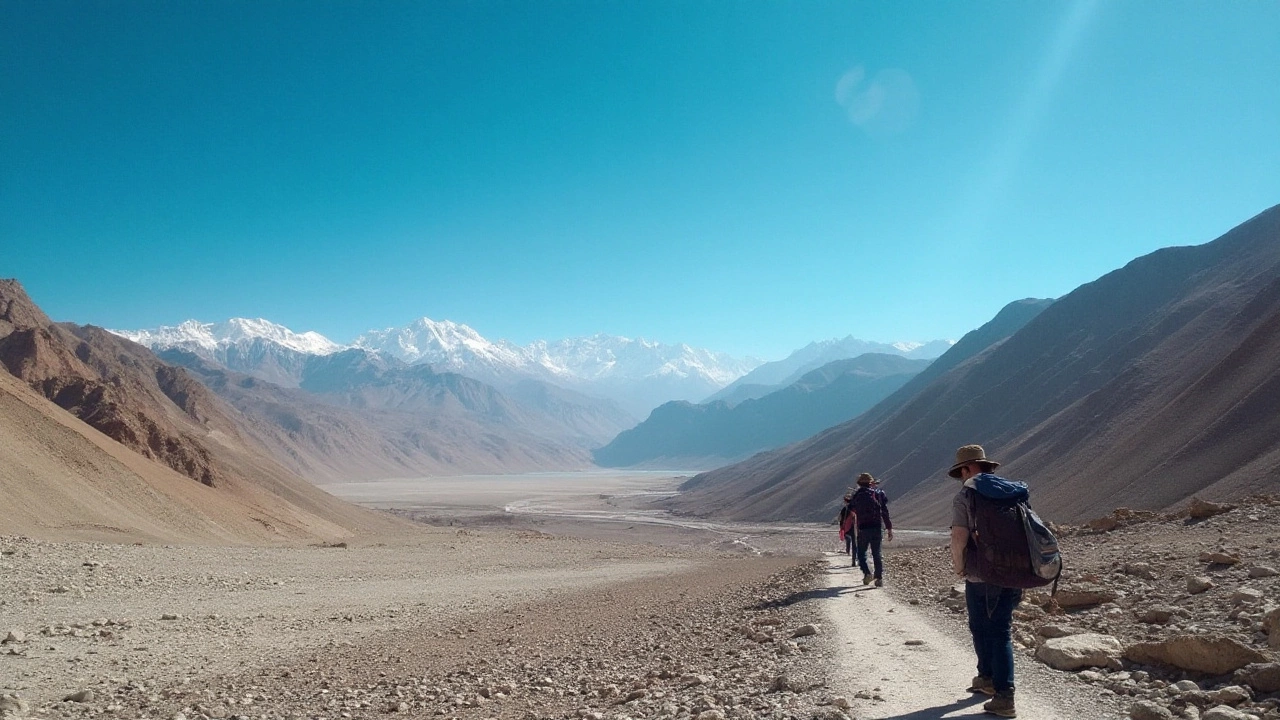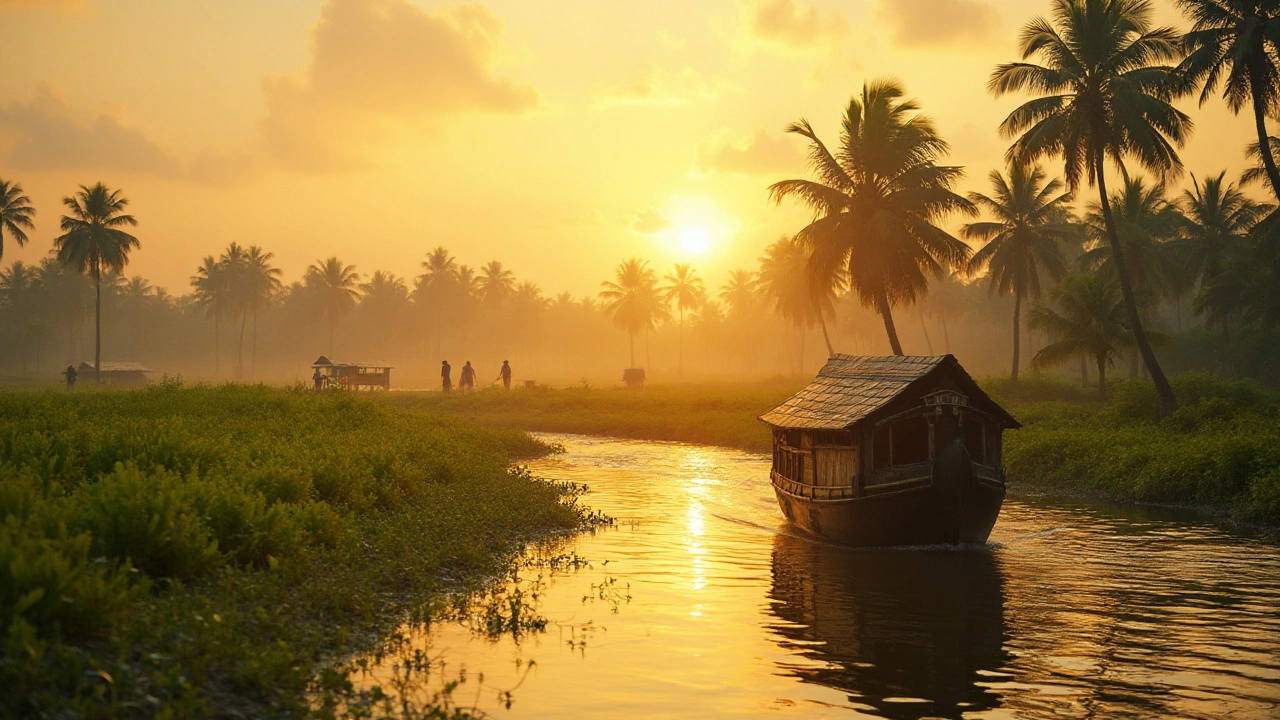When it comes to exploring the magnificent tapestry of India, Kerala and Ladakh are two regions that stand out for their striking contrasts. While both are parts of India, they offer distinct experiences and landscapes that are worlds apart. If you are in the mood for serene backwaters and lush greenery, Kerala might be your ideal destination. On the other hand, if the rugged, high-altitude beauty calls to your adventurous spirit, Ladakh could just be the place.
This journey through the unique features of Kerala and Ladakh will help you grasp what makes each region special. From their geographical wonders to their cultural nuances, and the varied climatic conditions that shape life in these regions, there is much to explore and understand. This exploration is not just about comparing two tourist destinations but discovering the heart and soul of vastly different worlds under one nation.
Geographic Differences
When you think of Kerala, images of emerald green landscapes, serene backwaters, and sprawling tea gardens might come to mind. Located in the southern part of India, Kerala is nestled between the Arabian Sea on the west and the Western Ghats on the east. This strip of tropical paradise stretches about 560 kilometers along the Malabar Coast. The Western Ghats, listed as a UNESCO World Heritage Site, are not just a backdrop but a formidable presence, influencing the region’s climate. These mountains host dense rainforests and are a biodiversity hotspot with rare flora and fauna. The intricate network of lagoons, lakes, and rivers forms what’s known as the backwaters, a unique feature that draws visitors from around the world.
In stark contrast lies Ladakh, located in the northernmost region of India. It's a part of the greater Kashmir territory and is flanked by two vast mountain ranges—the Himalayas and the Karakoram. This cold desert landscape is distinctive with its colossal snow-clad peaks, deep blue skies, and rugged terrains. Ladakh's elevation ranges from 2,750 meters to over 7,000 meters above sea level. Unlike Kerala’s tropical climate, Ladakh experiences harsh winters with temperatures dipping to -30°C, and summers that offer breathtakingly clear skies. Leh is the largest town in the area and serves as a gateway to this ethereal landscape.
Contrasting Landscapes
While Kerala boasts lush greenery and an abundance of water bodies, Ladakh presents a stark, awe-inspiring beauty marked by arid spaces, vast barren lands, and sparse vegetation. The famous Wayanad Wildlife Sanctuary in Kerala showcases the richness of tropical forests, home to elephants, tigers, and a vibrant bird population. Conversely, Ladakh's Hemis National Park is the kingdom of the elusive snow leopard. Here, the natural beauty is subtle yet profound, with golden hues at dusk and dawn painting an ethereal picture.
What further amplifies the differences is their geographic positioning concerning the Indian peninsula. Kerala's coastal position makes it vulnerable to monsoonal rains that nourish the land, while Ladakh's elevation and shielding by high mountains create a rain shadow, resulting in its arid environment. Both these regions demonstrate how geography shapes not only the land but the lives and cultures thriving in these areas, offering travel experiences that are as diverse as they are captivating.
"The landscapes of India are as varied as its people, providing a microcosm of contrasting environments within a single nation" - Travelogue India.

Cultural Distinctions
The cultural landscape of both Kerala and Ladakh is as rich and diverse as their geography. In Kerala, culture weaves an intricate tapestry of art forms, rituals, and festivals celebrated with fervor and joy throughout the year. Known as 'God’s Own Country', Kerala is renowned for its classical arts like Kathakali, a mesmerizing dance-drama noted for its complex gestures and elaborate costumes, and Mohiniyattam, famed for its graceful and gentle swaying movements.
The state also boasts a unique musical heritage, with traditional percussion ensembles like Chenda Melam that accompany many of its vibrant festivals. Religion plays a significant role in shaping life here, as evidenced by the numerous ancient temples, spectacular churches, and serene mosques, each bearing testimony to the region’s spiritual diversity. The cultural ethos of Kerala is deeply rooted in its literature and philosophy, influenced by the likes of the great philosopher Adi Shankaracharya.
In contrast, the cultural scenario in Ladakh reflects its unique position as a high-altitude desert nestled in the Himalayas. Often referred to as ‘Little Tibet,’ Ladakh shares deep-rooted connections with Tibetan traditions and is a stronghold of Tibetan Buddhism. Monasteries or ‘Gompas’ like Hemis, Thiksey, and Diskit, are pivotal to understanding the region’s essence, known for their stunning architecture and serene settings. Colorful prayer flags, enchanting butter lamps, and the sound of rhythmic chants create an atmosphere of peace and contemplation.
According to a travel enthusiast from Lonely Planet, "Ladakh offers a profound spiritual experience amidst its stark landscapes that are unrivaled elsewhere."
The cultural festivals of Ladakh, such as the Hemis Festival celebrated in June, showcase its rich tradition with Cham dances, where monks don vibrant masks and costumes. Buddhist teachings, alongside the influence of ancient Silk Route trade, manifest in the food, language, and lifestyle of its people. While Kerala revels in a harmony of classical and folk traditions, Ladakh preserves a largely unaltered heritage, echoing tales of an ancient world still alive in the present.
These cultural distinctions not only define the identity of Kerala and Ladakh but also offer travelers an opportunity to experience the incredible human diversity within India. Whether you wish to partake in the rhythmic beats of a Kerala festival or seek solace in the meditative quiet of a Ladakhi monastery, the cultural ethos of both regions leaves an indelible mark on those who journey these paths.

Climatic Contrasts
The climatic variations between Kerala and Ladakh are as striking as their geographical differences. Kerala, located in the southwestern part of India, experiences a tropical climate that is characterized by plenty of rain and humidity. The average temperature remains fairly consistent throughout the year, fluctuating between 24°C and 30°C. The monsoon season, which occurs from June to September, brings heavy rainfall and transforms the state into a lush green paradise, often dubbed as 'God's Own Country'. This abundance of rain contributes to Kerala's rich biodiversity, making it a haven for ecotourism and lush plantations. In contrast, Ladakh, nestled in the northernmost part of India in the Himalayas, enjoys a cold desert climate. The region experiences long, harsh winters with temperatures plummeting to as low as -20°C. Summers in Ladakh, on the other hand, are relatively mild with temperatures ranging from 5°C to 25°C. The scanty rainfall Ladakh receives is attributed to the rain-shadow effect of the Himalayas.
Due to such distinct climatic conditions, the best times to visit these regions greatly vary. Kerala, with its consistent warmth and the lush vibrancy of the monsoons, can be visited throughout the year, although many prefer the cooler and drier months from November to February for comfort. In contrast, Ladakh, with its freezing winters, is most accessible between June and September when the snow has melted, and roads are clear. This accessibility attracts thousands of tourists seeking adventure and the unique cultural tapestry that Ladakh offers.
"The cool summers and harsh winters of Ladakh present a stark contrast to the tropical climate of Kerala, providing diverse experiences for tourists exploring India." - National Geographic TravelerThese climatic conditions not only influence the tourist seasons but also impact the lifestyle, culture, and biodiversity of these regions. In Kerala, the constant rainfall supports vast landscapes of coconut groves, paddy fields, and spice plantations. It contributes to the vibrant ecology of the Western Ghats, home to numerous endemic species of flora and fauna. Conversely, Ladakh's arid conditions are conducive to hardy shrubs and grass species adapted to the cold desert climate. These support the region’s unique wildlife, including the snow leopard and the Tibetan antelope.

Travel Tips and Attractions
Planning a visit to both Kerala and Ladakh provides an opportunity to experience India’s breathtaking diversity. While Kerala offers the tranquility of its backwaters, lush forests, and abundant wildlife, Ladakh presents visitors with its rugged landscapes, tranquil monasteries, and high-altitude adventure. To make the most of your journey, it’s essential to delve into some travel tips and must-see attractions in both regions. This segment will guide you through the key sights and experiential advice tailored to each locale's uniqueness.
Exploring Kerala: A Lush Tropical Paradise
Kerala, often referred to as “God’s Own Country,” boasts a rich tapestry of landscapes and experiences. A visit to the serene backwaters of Alleppey is a must, where traditional houseboats glide along narrow canals amid swaying coconut palms. For wildlife enthusiasts, a trip to the Periyar Wildlife Sanctuary offers a chance to see elephants in their natural habitat and to explore the dense, misty forests of the Western Ghats that are teeming with biodiversity. Trekking through the lush, tea-covered hills of Munnar can be both invigorating and visually stunning, providing breathtaking panoramas of verdant landscapes. Additionally, a cultural sojourn to the historic Fort Kochi, with its colonial architecture and vibrant markets, introduces you to Kerala’s eclectic past. Remember, traditional Ayurvedic treatments are a quintessential part of the Kerala experience, offering rejuvenating therapies set against scenic surroundings.
Discovering Ladakh: The High Desert Beauty
Ladakh, with its remote desert landscapes and Buddhist monasteries, offers a dramatic contrast. Begin your journey at the renowned Nubra Valley, where landscapes shift from arid to lush, and you encounter the enchanting Bactrian camels. The ancient monasteries, such as Hemis and Thiksey, illuminate the region’s spiritual depth with their vibrant thangkas and serene monks. For adventure seekers, the trek to the captivating Pangong Lake is a visual feast, with its changing hues from azure to green to grey. A drive across the world’s highest motorable road, Khardung La Pass, is both thrilling and breathtaking, offering exquisite views of the snow-clad mountains that dominate the horizon. Additionally, the culture of Ladakh is filled with vibrant festivals, with the Hemis Festival being particularly notable. To truly engage with the local way of life, take some time to savor traditional Ladakhi cuisine, which includes Thukpa and the deliciously simple Skyu.
Insider Tips for Travel
Traveling in these regions requires a keen understanding of local conditions and customs. In Kerala, the climate is typically warm and humid, so lightweight, breathable clothing is advised. Boating in the backwaters is best enjoyed in the early morning or late afternoon to avoid peak sun heat. When visiting Ladakh, expect stark weather variations due to its high-altitude environment. It is crucial to acclimatize adequately before embarking on treks or high-altitude travel to prevent altitude sickness. Layered clothing is essential to adapt to the fluctuating temperatures throughout the day. Joining a guided tour can enhance your understanding of the intricate cultural landscape, as local guides often share insights that might not be readily available in guidebooks. Lastly, be mindful and respectful of local customs, particularly around sacred sites and during religious ceremonies, as both regions possess rich cultural heritages deeply intertwined with local traditions.
One traveler reminisced about Kerala's hospitality, "The genuine warmth and graciousness of the people in Kerala made every moment feel extraordinary and unforgettable."
As you journey through India, embracing the dichotomy of Kerala and Ladakh enriches not only your travel experience but also offers a profound appreciation of the country’s vast and varied cultural landscapes. Each region, with its distinct offerings and charming subtle differences, promises a memorable voyage filled with unique stories to take home.
